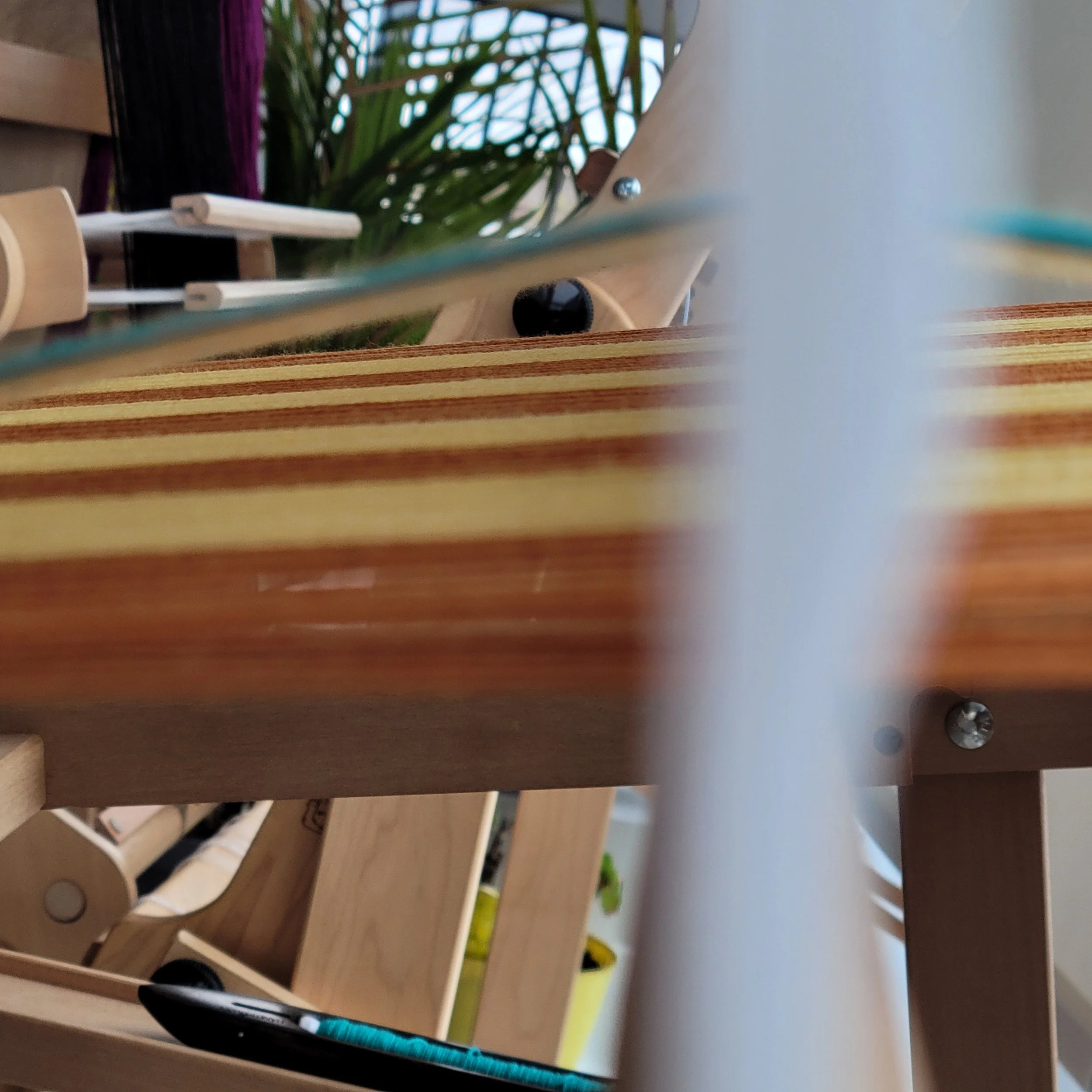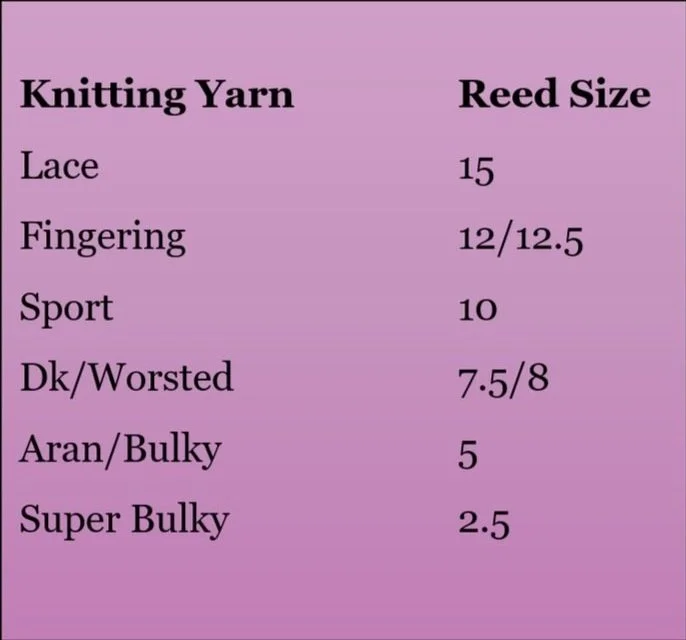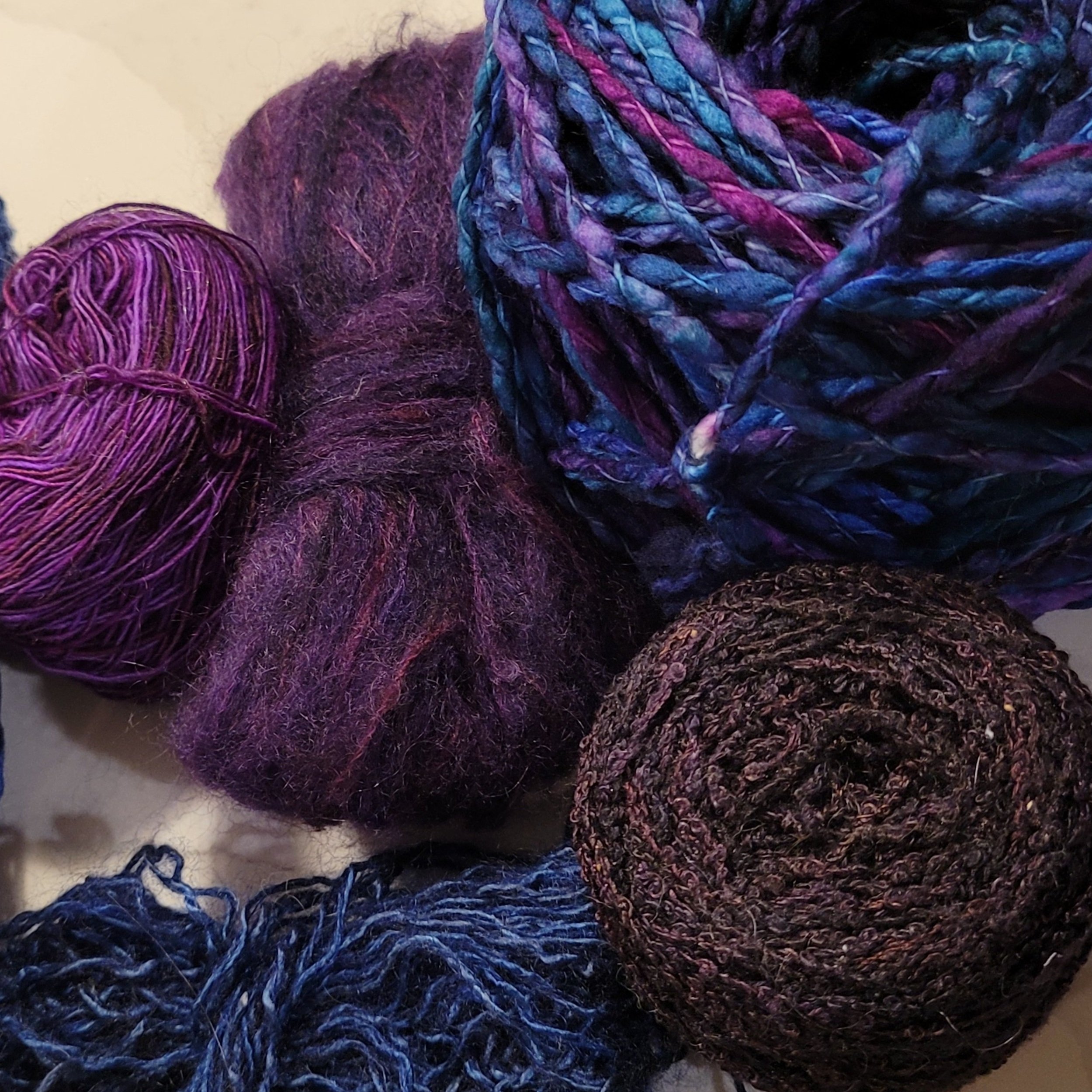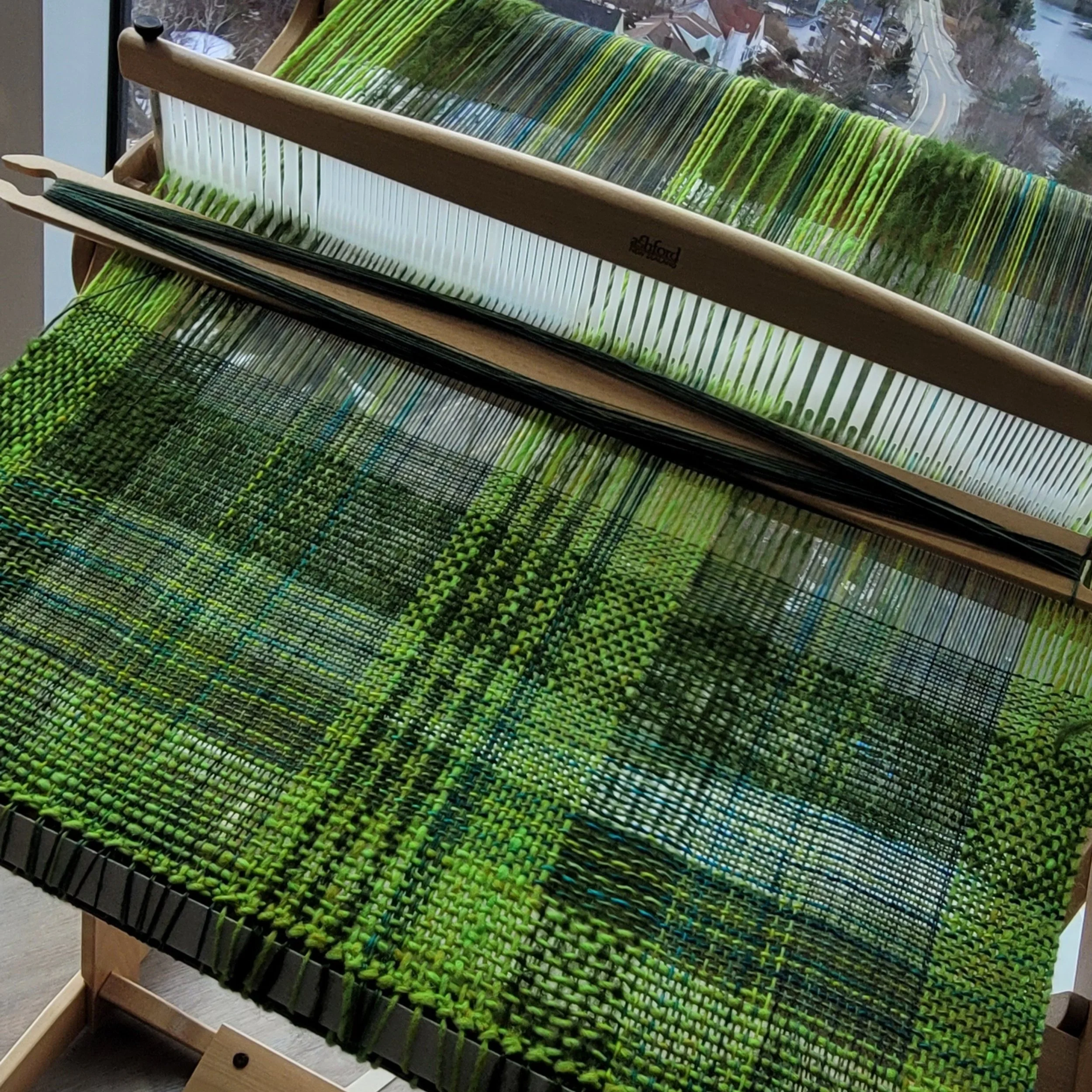Weaving Basics--What Reed Should I Use?
If you are a beginner weaver, you will understand that there is a whole new language that weavers use. There’s warp and weft and sett and picks, then add in the abbreviations, ppi, epi and wpi, and soon your eyes just start to glaze over. But don’t be discouraged, the language will come, and experienced weavers will understand even if you use the wrong word (or the right words the wrong way)! We are generally a gracious bunch.
Today we are going to talk about reeds. What they do, what the rules are and when to break them!
The shed is where the shuttle passes through
So, first, the reed is the part of the loom that has the slots and holes. You thread your yarn through these slots and holes. The reed also gives you a shed (the area that the shuttle passes through). Reeds come in different dents (sizes). Ashford has a 2.5, 5, 7.5, 10, 12.5 and 15. Schacht has a 5, 8, 10, 12 and just added a 15. The number refers to how many threads are in an inch of width. So a 5 dent reed has 5 ends per inch of width. Ends Per Inch can also be shortened to epi.
If you are a knitter, you already know that different yarn weights require different needle sizes. It’s the same for weaving and reeds. There are general guidelines to help you choose the right reed size for your yarn. The box to the right is a general guide. There are things to consider that might cause you to use a different reed. You may be familiar with the term Wraps Per Inch (wpi) from knitting. This is also a useful term to weavers.
Wraps Per Inch Tool
Wraps Per inch refers to how many wraps are in an inch of yarn. (Everything clear as mud now?) There are tools that can help you determine the wpi, or you can use a ruler or pencil, or even a shuttle! Simply wrap the yarn around your chosen object with an even tension. The yarn should be snugged up to its neighbour and not pulled out of shape. Wrap for a few inches, then using a ruler, count how many wraps are in 1 inch. This tells you the wpi. To use that number for determining which reed to use, divide the wpi by 2. So if your count was 20wpi, the reed size would be 10. Maybe. There are other things to consider. Let’s look at them.
Fibre Content: Some fibres will bloom more than others. Wool, alpaca, llama, mohair and other animal fibres will bloom more than silk, linen, tencel or synthetic yarns. Blooming means that during the wet finishing the yarn puffs up and becomes fuller, filling in the spaces in your weaving. In the chart above I listed lace as using a 15 dent reed…however, if my lace is a pure wool (like Malabrigo Lace) I will use my 12.5 dent reed instead. Mohair is super sticky, so for a lace-weight mohair I might use a 7.5 dent reed. The weave will look much like a screen door on the loom, but when it wet finishes the stickiness of the mohair gives the fabric stability. For a pure silk that wraps at 20 wpi I will likely use my 12 dent reed. Even a silk blend will bloom less than a pure animal fibre so might need the smaller reed. How do you know? Sampling and experience!
Superwash vs Non-Superwash: Superwash wool is treated in such a way to make it machine washable. This means it will not bloom as much as a non-superwash fibre. So, if I have a superwash fingering-weight yarn (like a standard sock yarn) I will use my 12 or 12.5 instead of the 10 I would use for same weight of non-superwash.
Weft: What you choose for weft can have an impact on the reed as well. If you are using a bulky yarn with a fine weft you might want to consider a smaller reed, particularly if the fibres won’t bloom too much. If you are using a bulky warp and weft, you might choose a slightly bigger reed to create a fabric with drape.
Desired Finished Effect: The final thing to consider is what you want the finished object to look like and be used for. A light, airy summer scarf may cause you to choose a larger than expected reed. An object that might see a lot of heavy wear, such as a floor rug or pillow cushion may cause you to go a little smaller. If you want a weft-faced piece, you will want a bigger reed, for a warp-faced piece choose the smaller reed.
As you can see, there is no “simple” answer to the question “what reed should I use?”. Nothing replaces experience (and sampling), but isn’t lovely that we can learn from each other so we don’t need to all make the same mistake! And none of this even touches on the issue of picks per inch (ppi) which is a whole different topic that can impact your reed choice!
Looking to play with different reed sizes? The Saori Style Scarf acts as a bit of a sampler for mixing different weights. Lighter than Air combines two very different fibres at very different setts (on a 12/12.5 dent reed). Or next time you weave a tea towel with 8/2 cotton try using a different-sized reed. 8/2 cotton doubled will work on a 10, 12 and 12.5 reed to produce beautiful towels. The Bohemian Towels are a great set to try this with.








